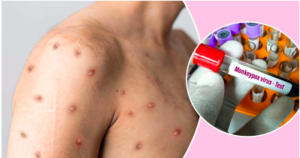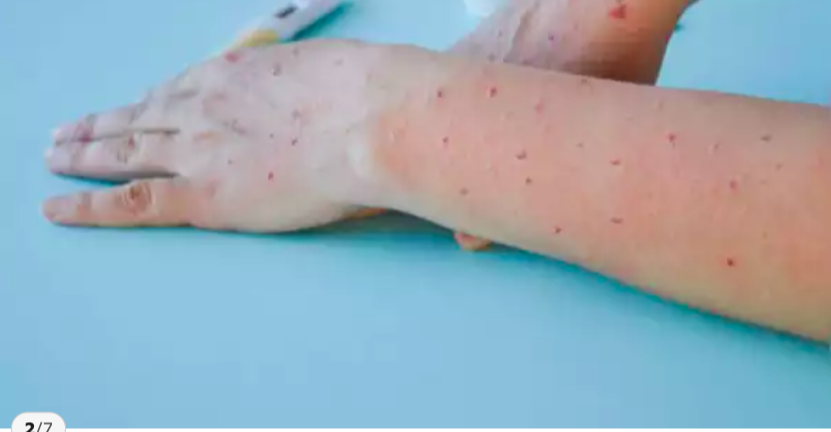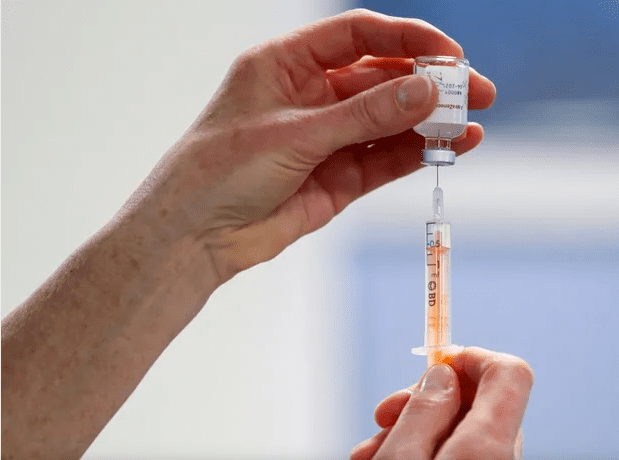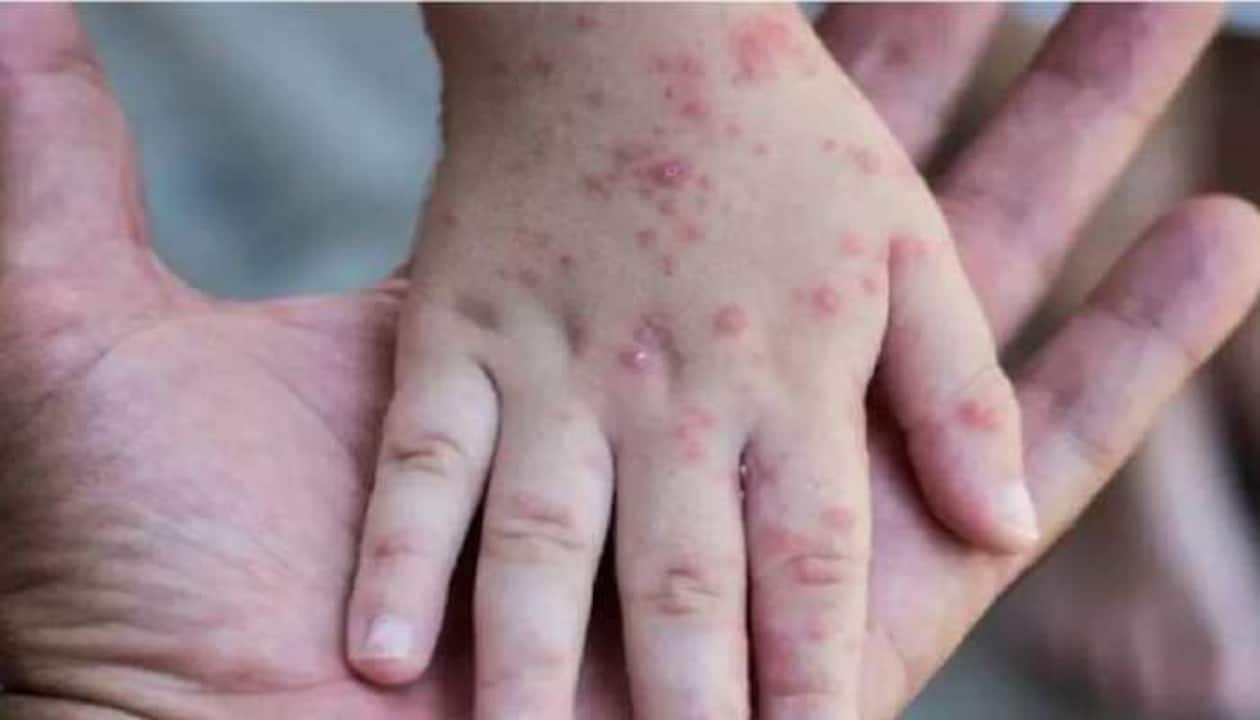Health
The Best Home Remedies for Monkeypox

The Best Home Remedies for Monkeypox
Monkeypox is a rare viral disease that affects humans and animals. It is similar to smallpox but generally milder. The disease is primarily found in Central and West African countries, with occasional outbreaks reported in other parts of the world.
While there is no specific cure for monkeypox, there are several home remedies that can help alleviate the symptoms and promote recovery. In this article, we will explore some of the best home remedies for monkeypox and how they can be beneficial in managing the condition.
One of the most effective home remedies for monkeypox is maintaining good hygiene practices. This includes frequent handwashing with soap and water, especially after coming into contact with an infected person or animal.
It is also important to keep the affected areas clean and dry to prevent the spread of the virus. Additionally, using disposable tissues or towels and avoiding sharing personal items can help minimize the risk of transmission.
Another home remedy for monkeypox is the use of natural remedies to relieve symptoms such as fever, rash, and itching. Herbal teas made from ingredients like chamomile, echinacea, and ginger can help boost the immune system and reduce inflammation. Applying aloe vera gel or calamine lotion to the affected areas can also provide relief from itching and soothe the skin.

In addition to these remedies, maintaining a healthy diet is crucial in supporting the body’s immune system and promoting recovery from monkeypox.
Including foods rich in vitamins, minerals, and antioxidants can help strengthen the immune system and aid in the healing process. Some examples of immune-boosting foods include citrus fruits, leafy greens, berries, nuts, and seeds.
Furthermore, getting enough rest and sleep is essential for the body to recover from any illness, including monkeypox. Resting allows the immune system to work more efficiently in fighting off the virus and promoting healing. It is important to listen to your body and give it the time it needs to recover fully.
While these home remedies can be beneficial in managing monkeypox, it is important to note that they should not replace medical treatment. If you suspect you have monkeypox or are experiencing severe symptoms, it is crucial to seek medical attention immediately. A healthcare professional can provide a proper diagnosis and recommend appropriate treatment options.
In conclusion, while there is no specific cure for monkeypox, there are several home remedies that can help alleviate symptoms and support the healing process. Maintaining good hygiene practices, using natural remedies to relieve symptoms, maintaining a healthy diet, and getting enough rest are all important aspects of managing monkeypox. However, it is essential to consult a healthcare professional for a proper diagnosis and medical treatment
1. Boosting the Immune System
One of the most important aspects of managing monkeypox is to strengthen the immune system. A strong immune system can help the body fight off the virus more effectively and reduce the severity of symptoms.
Here are some ways to boost your immune system:
- Consume a balanced diet rich in fruits, vegetables, and whole grains. These foods are packed with essential vitamins, minerals, and antioxidants that support immune function.
- Fruits like oranges, strawberries, and kiwis are high in vitamin C, which is known to enhance the production of white blood cells, the body’s first line of defense against infections.
- Vegetables like spinach, broccoli, and bell peppers are rich in vitamins A and E, which help regulate immune responses and protect cells from damage.
- Include immune-boosting foods such as garlic, ginger, turmeric, and green leafy vegetables in your diet. Garlic and ginger have long been used for their immune-boosting properties.
- They contain compounds that stimulate the production of immune cells and enhance their activity. Turmeric, on the other hand, is known for its anti-inflammatory properties, which can help reduce inflammation and support immune function.
- Green leafy vegetables like kale and spinach are packed with vitamins and minerals that support immune health. Stay hydrated by drinking an adequate amount of water throughout the day.
- Water plays a crucial role in maintaining the balance of bodily fluids and ensuring the proper functioning of the immune system. It helps carry oxygen to cells, flushes out toxins, and supports the production of lymph, a fluid that carries immune cells throughout the body.
- Get enough sleep to allow your body to rest and recover. Sleep is essential for immune function as it helps regulate the release of cytokines, proteins that play a key role in immune responses.
- Lack of sleep can weaken the immune system and make you more susceptible to infections. Aim for 7-9 hours of quality sleep each night to support optimal immune function.
- Engage in regular exercise to improve overall health and immune function. Exercise has numerous benefits for the immune system. It increases blood circulation, which allows immune cells to move more freely throughout the body.
- It also reduces the release of stress hormones, which can weaken the immune system. Aim for at least 150 minutes of moderate-intensity exercise or 75 minutes of vigorous-intensity exercise per week to support immune health.
2. Herbal Remedies
Herbal remedies have been used for centuries to treat various ailments, including viral infections. While there is limited scientific evidence on the effectiveness of herbal remedies for monkeypox, some herbs may have antiviral and immune-boosting properties.
Here are a few herbal remedies that may be beneficial:
- Echinacea: Echinacea is believed to enhance the immune system and may help reduce the severity of viral infections. It is a flowering plant that is native to North America and has been used in traditional medicine for centuries.
- Echinacea supplements are available in various forms, including capsules, tablets, and tinctures. Research suggests that Echinacea may stimulate the production of white blood cells, which play a crucial role in fighting off infections.
- Andrographis: Andrographis, also known as Andrographis paniculata or “King of Bitters,” is a herb that is native to South Asian countries such as India and Sri Lanka. It has been used in traditional Ayurvedic medicine for its antiviral and immune-boosting properties.
- Andrographis supplements are available in the form of capsules or tablets. Some studies suggest that Andrographis may help reduce the duration and severity of respiratory tract infections, including those caused by viruses.
- Green tea: Green tea is rich in antioxidants and may have antiviral and immune-boosting effects. It is made from the leaves of Camellia sinensis and is a popular beverage worldwide. Green tea contains a group of antioxidants called catechins, which have been shown to have antiviral properties. Some studies suggest that green tea catechins may inhibit the replication of certain viruses, including the influenza virus. However, more research is needed to determine the specific effects of green tea on viral infections such as monkeypox.
- Elderberry: Elderberry has been traditionally used to treat viral infections and may have antiviral properties. Elderberry is the fruit of the Sambucus tree and is commonly used in the form of syrups, lozenges, and supplements. It is rich in antioxidants, including anthocyanins, which have been shown to have antiviral effects. Some studies suggest that elderberry may help reduce the severity and duration of viral respiratory infections, such as the common cold and influenza. However, more research is needed to determine its effectiveness against monkeypox.
It is important to note that herbal remedies should be used with caution and under the guidance of a healthcare professional, as they may interact with medications or have adverse effects in certain individuals. Additionally, the use of herbal remedies should not replace standard medical care, and individuals with monkeypox or any other viral infection should seek appropriate medical treatment.
3. Symptom Management
While monkeypox usually resolves on its own within a few weeks, certain home remedies can help manage the symptoms and provide relief.
Here are some ways to alleviate the symptoms of monkeypox:
- Keep the affected areas clean: Gently wash the affected areas with mild soap and water to prevent secondary infections. It is important to avoid scrubbing the skin vigorously as it may cause further irritation and damage.
- Apply calamine lotion: Calamine lotion can help soothe the itching and reduce skin irritation. It contains ingredients like zinc oxide and ferric oxide, which have a cooling effect on the skin and provide temporary relief from itching.
- Take over-the-counter pain relievers: Nonsteroidal anti-inflammatory drugs (NSAIDs) can help alleviate pain and reduce fever. Commonly used NSAIDs include ibuprofen and acetaminophen, which can help reduce inflammation and provide relief from symptoms such as headache and muscle pain.
- Stay hydrated: Drink plenty of fluids to prevent dehydration, especially if you have a fever. Water, herbal teas, and clear broths can help replenish lost fluids and maintain hydration levels. Avoid caffeinated and sugary beverages as they can further dehydrate the body.
- Use cool compresses: Applying cool compresses to the affected areas can help relieve itching and discomfort. You can soak a clean cloth in cool water and gently place it on the affected areas for a few minutes. This can provide a soothing sensation and reduce inflammation.
- Take antihistamines: Over-the-counter antihistamines can help reduce itching and allergic reactions associated with monkeypox. These medications work by blocking the effects of histamine, a chemical released by the body in response to an allergic reaction. It is important to follow the recommended dosage and consult a healthcare professional before taking any medication.
- Avoid scratching: Although it may be tempting to scratch the itchy areas, it is important to resist the urge as it can lead to further skin damage and increase the risk of infection. Keeping nails short and wearing gloves during sleep can help prevent unintentional scratching.
It is important to note that while these home remedies can provide relief, they are not a substitute for medical treatment. If you suspect you have monkeypox or if your symptoms worsen or persist, it is crucial to seek medical attention for proper diagnosis and treatment.
8. How is monkeypox diagnosed?
Monkeypox can be diagnosed through a combination of clinical evaluation, laboratory tests, and medical history. A healthcare professional will typically examine the characteristic rash and other symptoms associated with monkeypox, such as fever and swollen lymph nodes.
To confirm the diagnosis, they may collect samples of fluid from the rash or throat and send them to a laboratory for testing. These samples can be analyzed using various methods, including polymerase chain reaction (PCR) testing, which can detect the presence of the monkeypox virus DNA.
9. What are the treatment options for monkeypox?
While there is no specific cure for monkeypox, there are treatment options available to manage the symptoms and support the patient’s recovery. This typically involves providing supportive care, such as ensuring proper hydration, managing pain and fever with over-the-counter medications, and keeping the affected areas clean to prevent secondary infections. In severe cases, hospitalization may be required for close monitoring and more intensive treatment.
10. Can monkeypox be fatal?
In most cases, monkeypox is a self-limiting disease, meaning it resolves on its own without causing serious harm. However, in rare instances, complications can arise, leading to severe illness and even death.
These complications are more likely to occur in individuals with weakened immune systems, such as young children, older adults, and those with underlying health conditions.
11. Is there a vaccine for monkeypox?
Currently, there is no specific vaccine available for monkeypox. However, the smallpox vaccine, which is no longer routinely given, has been shown to provide some cross-protection against monkeypox. This means that individuals who have received the smallpox vaccine may have a lower risk of developing severe monkeypox symptoms if they are exposed to the virus.
12. Can animals other than monkeys transmit monkeypox?
Although the virus was first identified in monkeys, it can also be found in various other animals, including rodents, rabbits, and even domesticated pets like dogs and cats.
These animals can potentially transmit the virus to humans if there is direct contact with their bodily fluids or contaminated objects. Therefore, it is important to practice caution and avoid handling or coming into close contact with any potentially infected animals.
13. Are there any ongoing efforts to control monkeypox outbreaks?
Yes, public health authorities and organizations are actively involved in monitoring and controlling monkeypox outbreaks. This includes implementing surveillance systems to detect cases, providing education and awareness programs to the public, and conducting research to better understand the virus and develop effective prevention and treatment strategies.
Additionally, efforts are being made to improve laboratory capacity for rapid diagnosis and to strengthen healthcare systems in affected regions.
14. Can I get monkeypox more than once?
While rare, individuals can experience multiple episodes of monkeypox. However, having a previous infection does not necessarily confer long-term immunity, and individuals can still be susceptible to reinfection.
Therefore, it is important to continue practicing preventive measures, such as good hygiene and avoiding contact with infected animals, even if you have had monkeypox in the past.
Health
6 Daily Habits to Naturally Lower Cholesterol Levels
Health
Understanding the Rapid Spread of Monkeypox’s New Strain Clade 1b

Understanding the Rapid Spread of Monkeypox’s New Strain Clade 1b: Key Facts on Transmission, Symptoms, Severity, and Vaccination
Monkeypox, a viral disease with symptoms resembling smallpox, has recently gained attention due to the emergence of a newstrain, Clade 1b.
This article delves into the essential details about this new variant, including how it spreads, its symptoms, its severity, and the current state of vaccinations.
Our goal is to provide a comprehensive and clear understanding of this evolving situation, enabling readers to stay informed and prepared.
Monkeypox, once a rare and somewhat obscure disease, has recently become a significant public health concern due to the emergence of new strains.
Among these, Clade 1b has been noted for its rapid spread and distinct characteristics.
As we navigate through the complexities of this variant, it is crucial to grasp the fundamentals of its transmission, symptoms, severity, and preventive measures, including vaccination.
Understanding Monkeypox Clade 1b
What is Monkeypox?
Monkeypox is a zoonotic virus belonging to the Orthopoxvirus genus, which also includes smallpox.
First identified in monkeys, it can infect humans through close contact with infected animals or individuals.
While it shares similarities with smallpox, monkeypox tends to be less severe and less transmissible.
Clade 1b Overview
Monkeypox has several clades (strains), with Clade 1b being the most recent and notable for its rapid spread.
This strain has shown increased transmissibility compared to previous clades, raising concerns among public health officials.
Transmission of Clade 1b
Modes of Transmission
Clade 1b spreads primarily through:
- Direct Contact: Contact with bodily fluids, skin lesions, or contaminated surfaces of an infected person.
- Respiratory Droplets: Prolonged face-to-face interaction can lead to transmission through respiratory droplets.
- Animal Contact: Infected animals, particularly rodents and primates, can transmit the virus to humans.
Environmental Factors
Transmission rates can also be influenced by environmental factors such as:
- Crowded Living Conditions: Higher transmission rates are observed in densely populated areas.
- Sanitation Practices: Poor hygiene and sanitation can facilitate the spread of the virus.
Symptoms of Monkeypox Clade 1b
Early Symptoms
The symptoms of Clade 1b may resemble those of other viral infections, making initial diagnosis challenging.
Early symptoms include:
- Fever: A sudden onset of high temperature.
- Headache: Severe headaches that can persist for days.
- Muscle Aches: Generalized muscle pain and discomfort.
- Fatigue: Extreme tiredness and weakness.
Rash and Skin Lesions
A defining feature of monkeypox is the rash, which typically progresses through several stages:
- Macules: Flat, discolored spots on the skin.
- Papules: Raised bumps.
- Vesicles: Fluid-filled blisters.
- Pustules: Pus-filled lesions that eventually crust over.
Severe Symptoms
In more severe cases, symptoms may include:
- Encephalitis: Inflammation of the brain, leading to neurological symptoms.
- Pneumonia: Infection of the lungs that can cause difficulty breathing.
- Secondary Infections: Bacterial infections that may complicate the healing process.
Severity of Clade 1b
General Outlook
Clade 1b has been associated with a higher transmission rate and more severe outcomes compared to other strains. However, the overall severity can vary widely among individuals.
Factors influencing severity include:
- Immune System Status: Individuals with weakened immune systems or pre-existing conditions may experience more severe symptoms.
- Age: Young children and elderly individuals are at higher risk of severe illness.
- Timeliness of Medical Care: Early medical intervention can significantly affect the outcome.
Mortality Rates
The mortality rate for Clade 1b is currently under study, but initial data suggest it may be higher than previous strains. Prompt medical attention and supportive care are crucial in reducing the risk of severe outcomes.
Vaccination and Prevention
Current Vaccines
Vaccination is a key strategy in controlling the spread of monkeypox.
The following vaccines are relevant:
- Smallpox Vaccine: The smallpox vaccine is effective against monkeypox due to the similarities between the viruses. It provides protection for those who have been recently vaccinated or who received it in the past.
- Monkeypox-Specific Vaccine: Research is ongoing into vaccines specifically targeting monkeypox, with several candidates showing promise in trials.
Vaccination Recommendations
Public health authorities recommend vaccination for:
- Healthcare Workers: Individuals who are at higher risk due to their profession.
- High-Risk Populations: People in areas experiencing outbreaks or those with frequent exposure to infected individuals.
Preventive Measures
In addition to vaccination, preventive measures include:
- Good Hygiene: Regular handwashing and use of hand sanitizers.
- Avoiding Contact: Minimizing close contact with individuals displaying symptoms or with infected animals.
- Isolation: Infected individuals should isolate themselves to prevent the spread of the virus.
Conclusion
The emergence of Monkeypox Clade 1b represents a significant challenge to global health. Its increased transmissibility and potential for severe outcomes highlight the importance of staying informed and proactive.
By understanding its transmission, symptoms, and preventive measures, individuals and communities can better protect themselves and mitigate the impact of this new strain.
FAQs
1. What makes Clade 1b different from other monkeypox strains?
Clade 1b is noted for its increased transmissibility and potentially more severe outcomes compared to other strains.
It spreads faster and may lead to more serious health issues, necessitating closer monitoring and enhanced preventive measures.
2. How can I tell if I have monkeypox or another viral infection?
Monkeypox often begins with flu-like symptoms and progresses to a distinct rash.
If you experience these symptoms, especially if you’ve been in contact with someone who has monkeypox or are in an outbreak area, seek medical advice for accurate diagnosis and testing.
3. Is the smallpox vaccine effective against Monkeypox Clade 1b?
Yes, the smallpox vaccine offers protection against monkeypox, including Clade 1b, due to the similarities between the two viruses.
However, its effectiveness may vary based on factors such as time since vaccination and individual health conditions.
4. Are there any new vaccines specifically for monkeypox?
Research is ongoing to develop and approve vaccines specifically targeting monkeypox.
Several candidates are in various stages of clinical trials, with some showing promising results in enhancing protection against monkeypox strains, including Clade 1b.
5. What should I do if I suspect I have monkeypox?
If you suspect you have monkeypox, contact a healthcare provider immediately. They can guide you through testing, diagnosis, and appropriate care.
In the meantime, practice good hygiene and avoid close contact with others to prevent spreading the virus.
References:
Health
Understanding the Low Risk of Mpox Outbreak in India and Our Preparedness Measures

-

 Trending Stories1 year ago
Trending Stories1 year agoCDC: 1 in 4 Americans Still COVID-Free by End of 2022
-

 Health5 years ago
Health5 years agoMeghan Trainor Shares Motivational New Song ‘Blink’
-

 Health2 years ago
Health2 years agoHow Long Does Monkey Pox Last Before It Surfaces in the Body?
-

 Health2 years ago
Health2 years agoWhat Causes Swollen Body? Understanding Edema and its Triggers
-

 Health4 months ago
Health4 months agoHow Do Pawpaw Seeds Support Cardiovascular Health?
-

 Health3 years ago
Health3 years agoNutrition and the Importance of a Fitness Program – 3 Things to Know
-

 Health3 years ago
Health3 years ago5 Weird Reasons Why Pimples Disappear After Marriage
-

 Health2 years ago
Health2 years agoHealth Benefits Of Pawpaw Seed? 7 Things To Know










